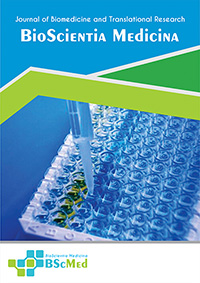Main Article Content
Abstract
Background: Acrodermatitis continua of Hallopeau (ACH) is a rare, debilitating variant of pustular psoriasis. Its profound clinical mimicry of common infections, particularly onychomycosis, often leads to extensive diagnostic delays and ineffective treatments, causing significant patient morbidity. This report details a case with a 15-year history of misdiagnosis, illustrating a structured methodological approach to diagnosis and management.
Case presentation: A 40-year-old Indonesian woman presented with a 15-year history of painful pustular lesions and severe onychodystrophy affecting seven digits, refractory to numerous antimicrobial therapies. The diagnostic process was systematically re-evaluated; dermoscopy revealed features inconsistent with onychomycosis (dotted vessels, hemorrhagic spots), prompting a definitive skin and nail matrix biopsy. Histopathology confirmed pustular psoriasis with pathognomonic Kogoj's spongiform pustules and Munro's microabscesses. Treatment was initiated with cyclosporine (3.3 mg/kg/day), leading to rapid remission. However, the development of gingival hyperplasia and hypertension necessitated a transition to weekly methotrexate (15 mg). The patient achieved and maintained clinical remission on this regimen.
Conclusion: This case underscores the necessity of a high index of suspicion for ACH in chronic, treatment-resistant nail dystrophy. It demonstrates that a methodical application of dermoscopy and histopathology is indispensable for overcoming clinical mimicry. The main lesson is that structured diagnostic evaluation and sequenced therapy, responsive to adverse events, are crucial for achieving long-term remission and restoring quality of life.
Keywords
Article Details
As our aim is to disseminate original research article, hence the publishing right is a necessary one. The publishing right is needed in order to reach the agreement between the author and publisher. As the journal is fully open access, the authors will sign an exclusive license agreement.
The authors have the right to:
- Share their article in the same ways permitted to third parties under the relevant user license.
- Retain copyright, patent, trademark and other intellectual property rights including research data.
- Proper attribution and credit for the published work.
For the open access article, the publisher is granted to the following right.
- The non-exclusive right to publish the article and grant right to others.
- For the published article, the publisher applied for the Creative Commons Attribution-NonCommercial-ShareAlike 4.0 International License.





